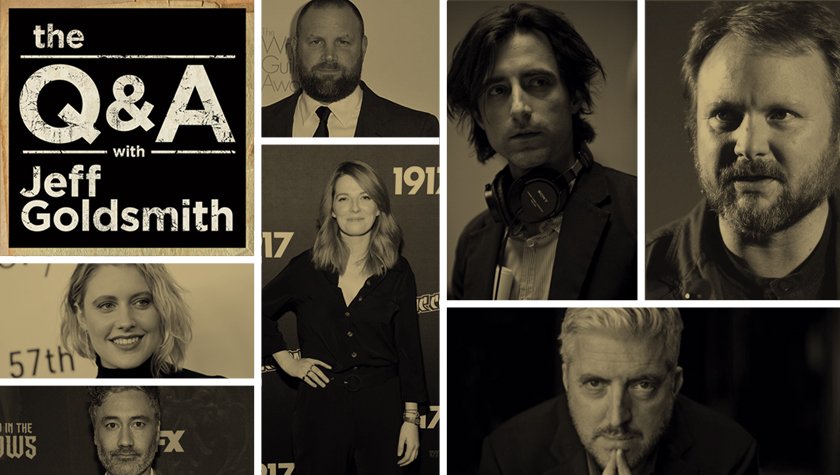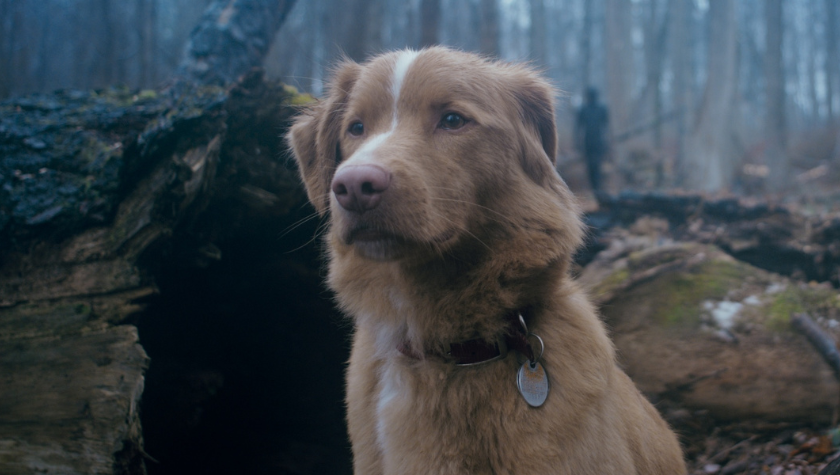WGA: Beyond Words with Nominated Screenwriters
February 5, 2020
Relative literary genius graced the stage at the Beyond Words 2020 discussion as 10 screenwriters gathered to discuss their work and advice for other screenwriters. Noah Baumbach (Marriage Story), Micah Fitzerman-Blue and Noah Harpster (A Beautiful Day in the Neighborhood), Susanna Fogel and Katie Silberman (Booksmart), Greta Gerwig (Little Women), Lauren Greenfield (The Kingmaker), Mark Jonathan Harris (Foster), Rian Johnson (Knives Out), Scott Silver (Joker), and Steven Zaillian (The Irishman)—all nominated for awards by the Writers Guild Of America for their world-renowned films and documentaries—got personal, answering questions not only about their films, but about their writing styles and technique.
“I’m a mess, so everything was everywhere,” Greta Gerwig admitted about writing Little Women, evoking a stream of laughter from the audience.
Even still, Gerwig managed to successfully adapt Little Women, a film that received overwhelming praise on its way to six Academy Award® nominations, including Best Picture.
An intricate, layered exploration of a multitude of characters in different time periods, Gerwig revealed Little Women wasn’t outlined in the traditional sense, and that her process could be analogized to making a cake.
“So, you're revising more,” the moderator asked Gerwig. “It’s like you made this cake once and you’re going to go back and make this cake again, but now you know it behaves a certain way.”
“That's right,” Gerwig agreed. “I have lots and lots of scenes. I tend to overwrite like 300 pages of stuff and then I’ll start shaping it into what feels like a movie.”
Gerwig also worked tirelessly to ensure moments and dialogue were truthful to the original novel, written by Louisa May Alcott.
“I was constantly looking at the book and at other research because I wanted every single line in the movie to be exactly from the book, or from something she wrote in another book or letter or journal or extrapolated,” explained Gerwig. “I wanted the whole thing to be foot-notable. I didn't want it to be me pontificating.”
Outlining for a writer could be compared to drafting blueprints for an architect; it’s a way for the writer to organize their story, categorize main points, and is supposed to provide a structure to allow the writing process to flow smoothly.
But outlining can still be different for every creative.
For Susanna Fogel and Katie Silberman, writers of Booksmart, outlining is imperative, almost like “doing your homework on a Friday night.”
“I’m a big outliner,” Fogel said. “I outline to have a place to start and know where the goal posts are like every 10-15 pages.”
“I love to start with an outline that sort of makes sense for the very basic structure,” Silberman added.
With that said, for Silberman, sticking to the outline isn’t always necessary. An outline provides the skeletal structure, and the ability to trace the character arcs from scene to scene. But when she finds writing a specific section difficult, it may mean that it should be cut altogether from the outline and the script.
“If it’s not working and it’s taking forever, it's never going to be as good as something that comes easily,” Silberman said.
“Sometimes, I think the best writing I’ve done just comes from feeling like you’re in that state when it flows organically. The scenes you spend hours on are often not good and always feel mechanical.”
Knives Out writer Rian Johnson said he spends 80% of the process outlining and structuring his stories as a way to understand the shape of what he’s about to write. He also draws it visually, including arcs for story and character.
“I have a small Moleskine, and I know I’m ready to start writing the script when I can draw the arc of the whole movie on one page of that,” Johnson said. “I break it down by sequences, not scenes. I think in terms of 10-12 minute sequences basically, like little dramatic arcs, as opposed to individual scenes.”
Johnson added that outlining this way helps him think about writing his feature more as a relay race of, “what bigger arcs are drawing the audience through the whole movie.”
Noah Baumbach (Marriage Story) doesn’t outline. However, he does keep notepads at home and in transit with him to record every idea that pops into his head. The notepads are full of story and location ideas, colors, images and random lines of dialogue.
“The notes aren’t always for one particular script,” Baumbach said. “But eventually, some of these things start to form and feel like they are for a particular movie or idea or story. Then, at some point, I transfer them into a computer document. But I always keep it in note form.”
From there, Baumbach writes scenes, which usually inform the characters and the story. He believes working this way also influences the eventual theme of the movie—something else he doesn’t pre-plan.
“I don’t think about themes, but rather about the story and how to best tell that story,” Baumbach said. “If I can tell the story clearly, those other things like theme, they come out of that.”
Research for each movie proved to be invaluable, especially for those writing documentary films like Mark Jonathan Harris. His film, Foster, examines the American foster-care system through the lens of the Los Angeles department of children's services. Jonathan Harris said that when one writes a documentary, one is “always writing a documentary,” and that many of the film’s themes came about during filming.
“One unspoken question we had was the effect of being born in the drug care system,” Jonathan Harris said. “While we were there, the baby had a seizure, then that became a thread of the film. It was something unexpected, but in a way, it was something we were looking for.”
Similarly, much of Lauren Greenfield’s documentary also wasn’t planned in advance. The Kingmaker is an examination of the controversial history of Filipino politician Imelda Marcos and her family. Greenfield’s project morphed as she and her team gathered an immense amount of footage over five years.
“For the writing part, I get the material, and then I start writing with the words I’ve already gotten,” Greenfield said. “I transcribe all of the interviews, and I transcribe the words in the scenes and work from those. But it's also a lot of scene structuring, where I have a whole wall of four-by-six cards and I’m constantly moving things around.”
The screenwriters for A Beautiful Day in the Neighborhood about Fred Rogers, admitted crafting a compelling narrative from such a wholesome figure proved challenging.
“I mean, we always imagined it to be about a journalist trying to do a profile of this kind of bizarre person—Fred Rodgers—and failing,” said Noah Harpster, co-writer on the project. “It was a way for us to access this question of who Fred Rogers really was—is this guy for real? Like nine minutes in, we knew we couldn't write a biopic about Fred Rogers because that dude was just awesome for 74 years, and that doesn’t make for a good movie.”
That’s where superb writing comes in; the unifying factor behind these acclaimed films that have had considerable impact over the past year. Their unmistakable and distinctive points of view, along with stories that challenge our expectations and engage our empathy, are the reason these writers have all been honored with nominations by the Writers Guild of America.
Written by: Allison Norlian
Allison Norlian is a three-time, Emmy-nominated journalist who has worked as a television reporter and anchor in markets around the country. She has covered a variety of stories from the riots in Charlottesville, Virginia to President Trump’s travel ban in the fourth circuit court of appeals. Allison has also won AP awards for her work and a Catalyst For Change award from the Arc of Virginia for her reporting on the disabled community. Allison just moved to Los Angeles with her screen writer husband and two cats and is excited for all LA has to offer!



